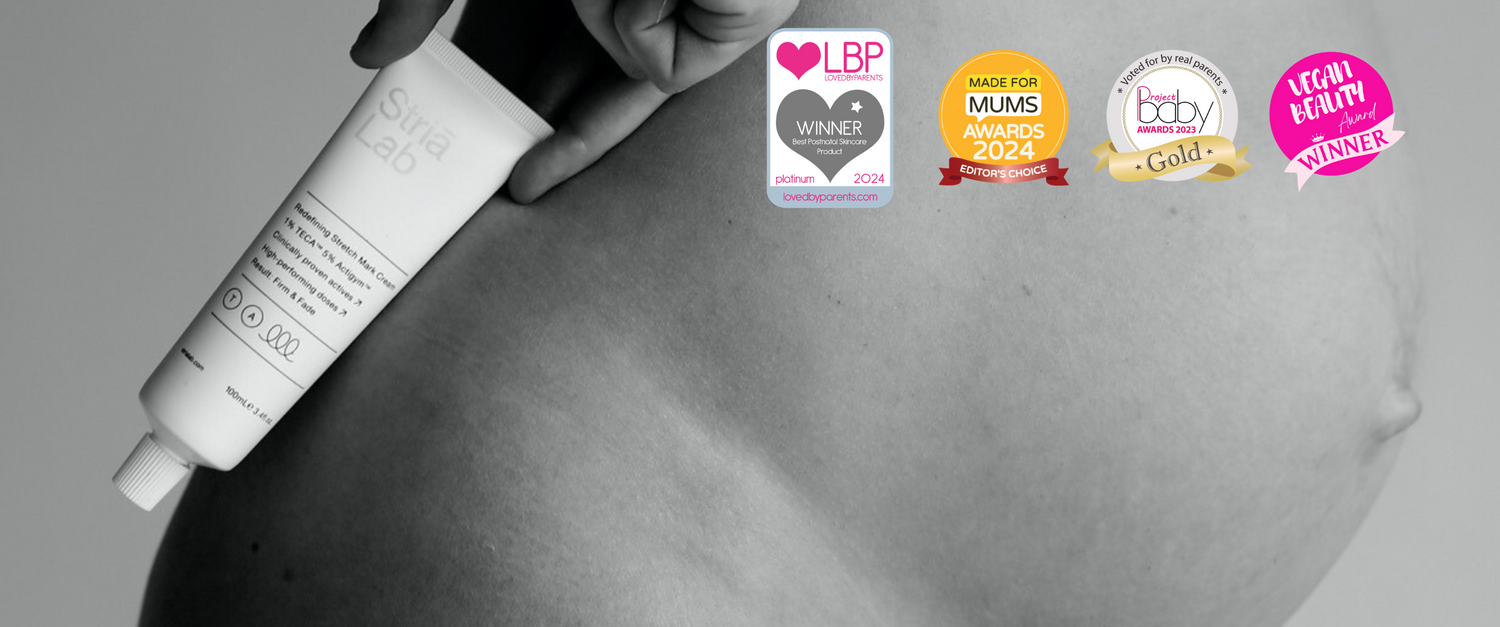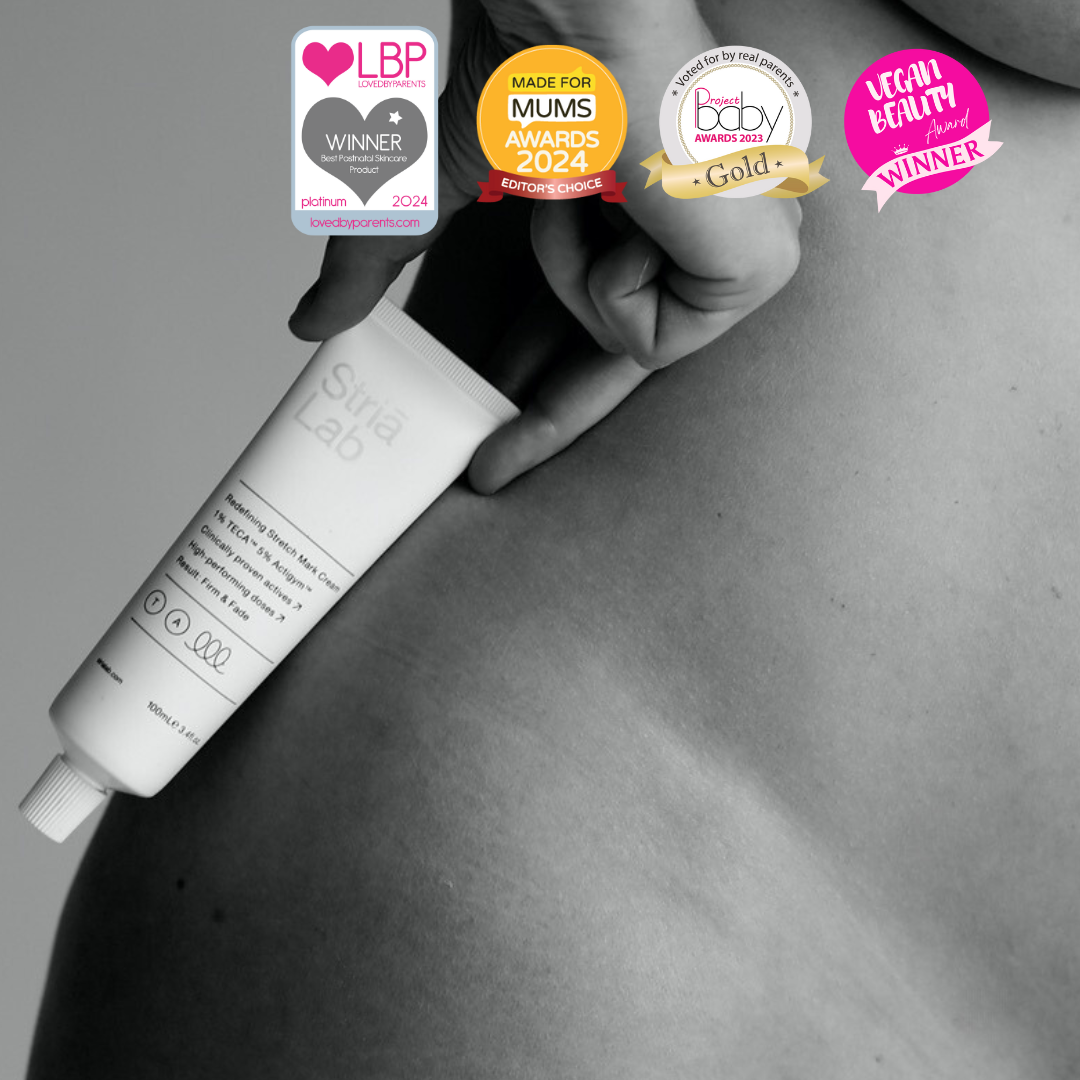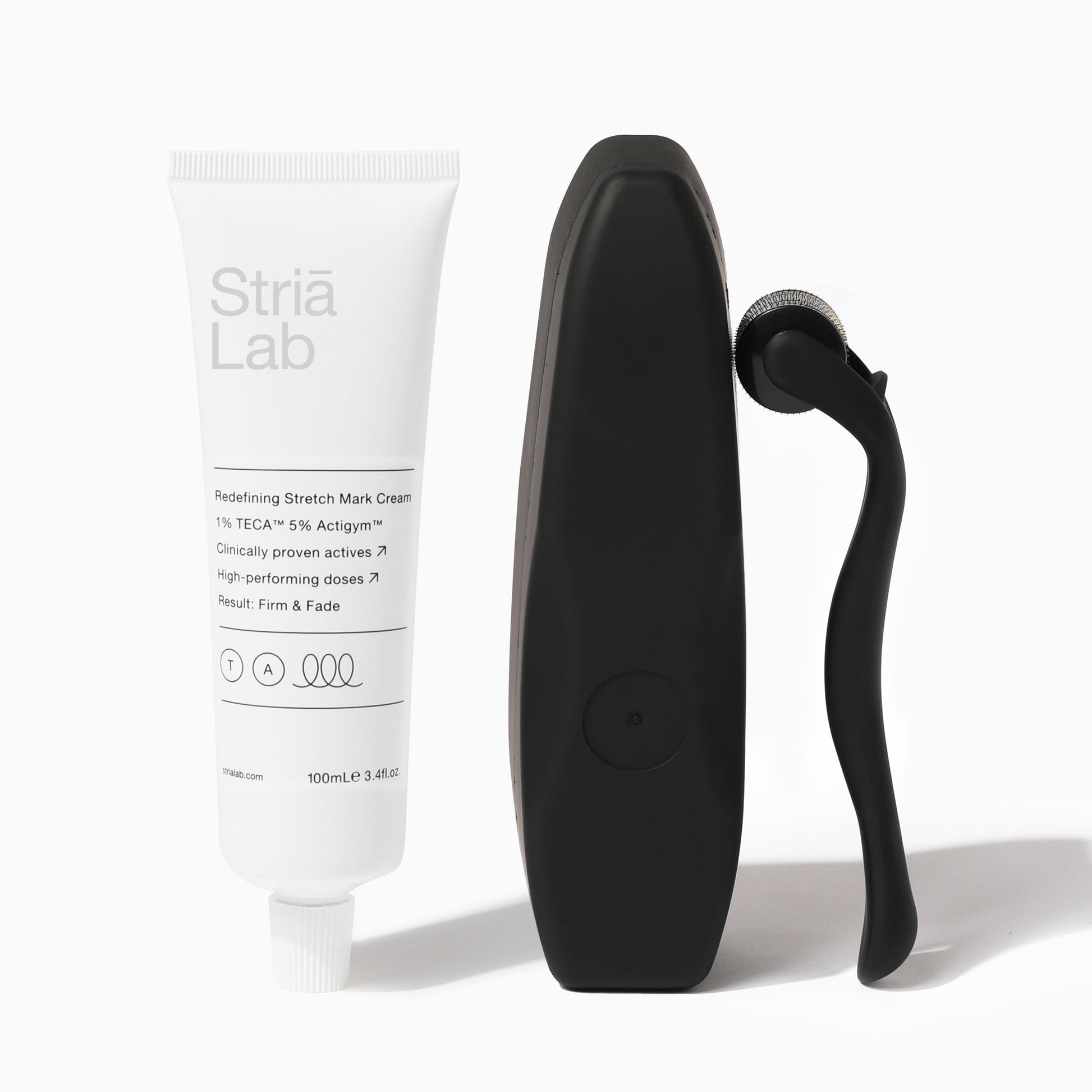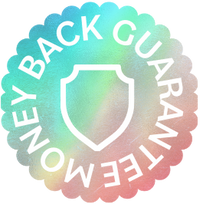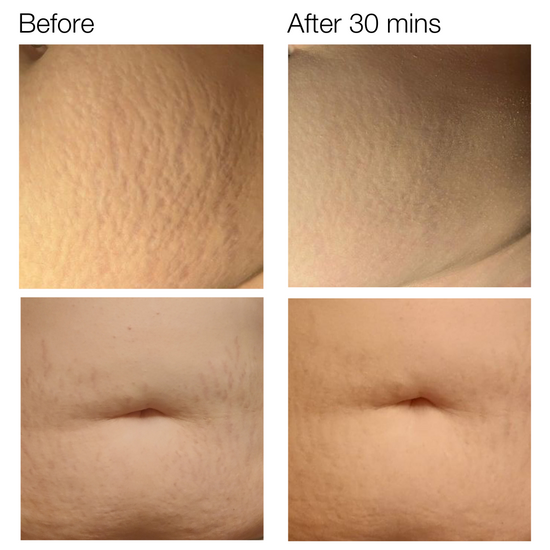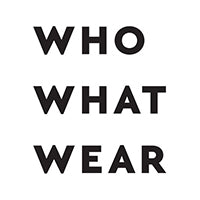STRETCH MARK
TREATMENT KIT
STRETCH MARK
TREATMENT KIT
The ultimate stretch mark transformation
- Multi-award-winning kit
- Clinically proven
- Dermatologist-approved
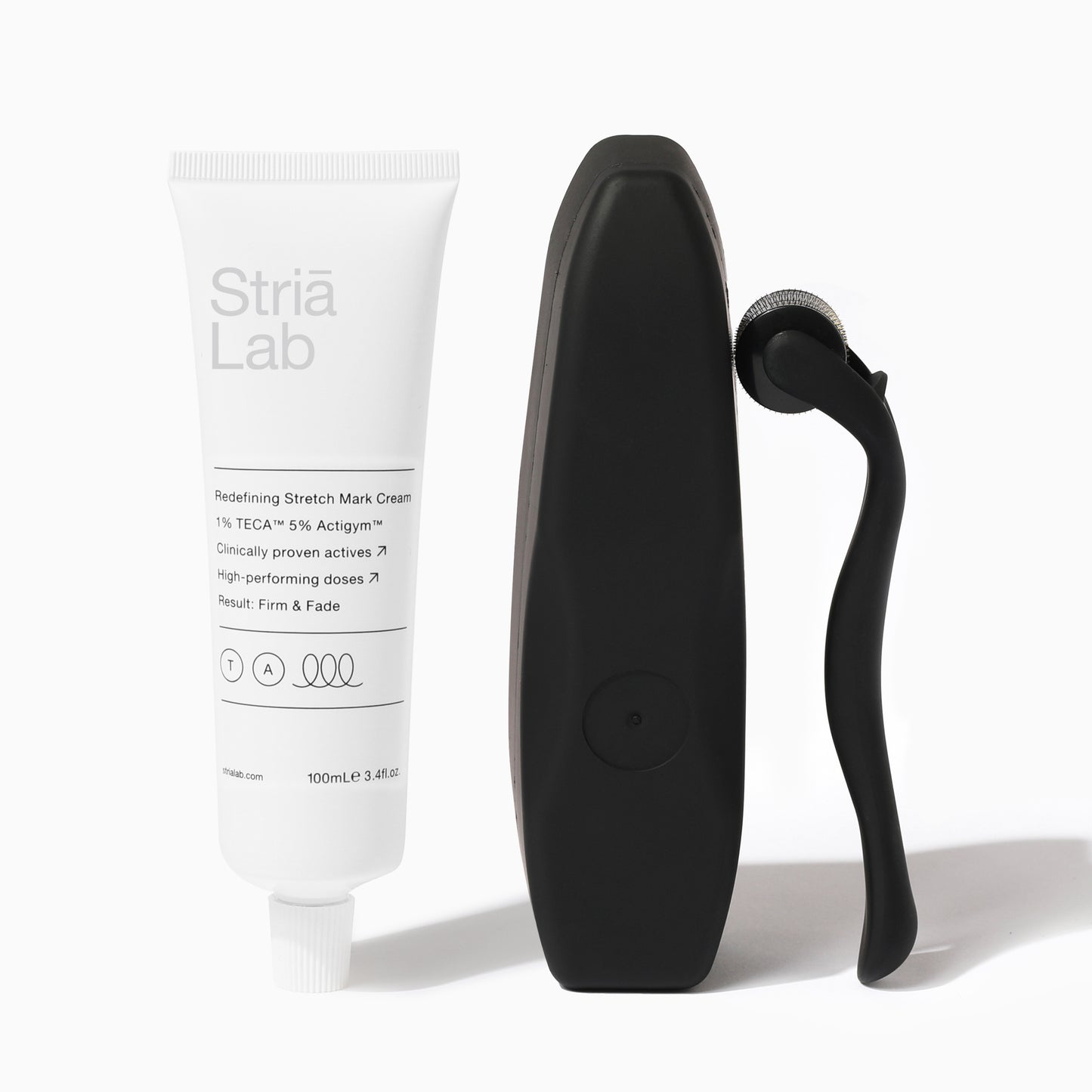
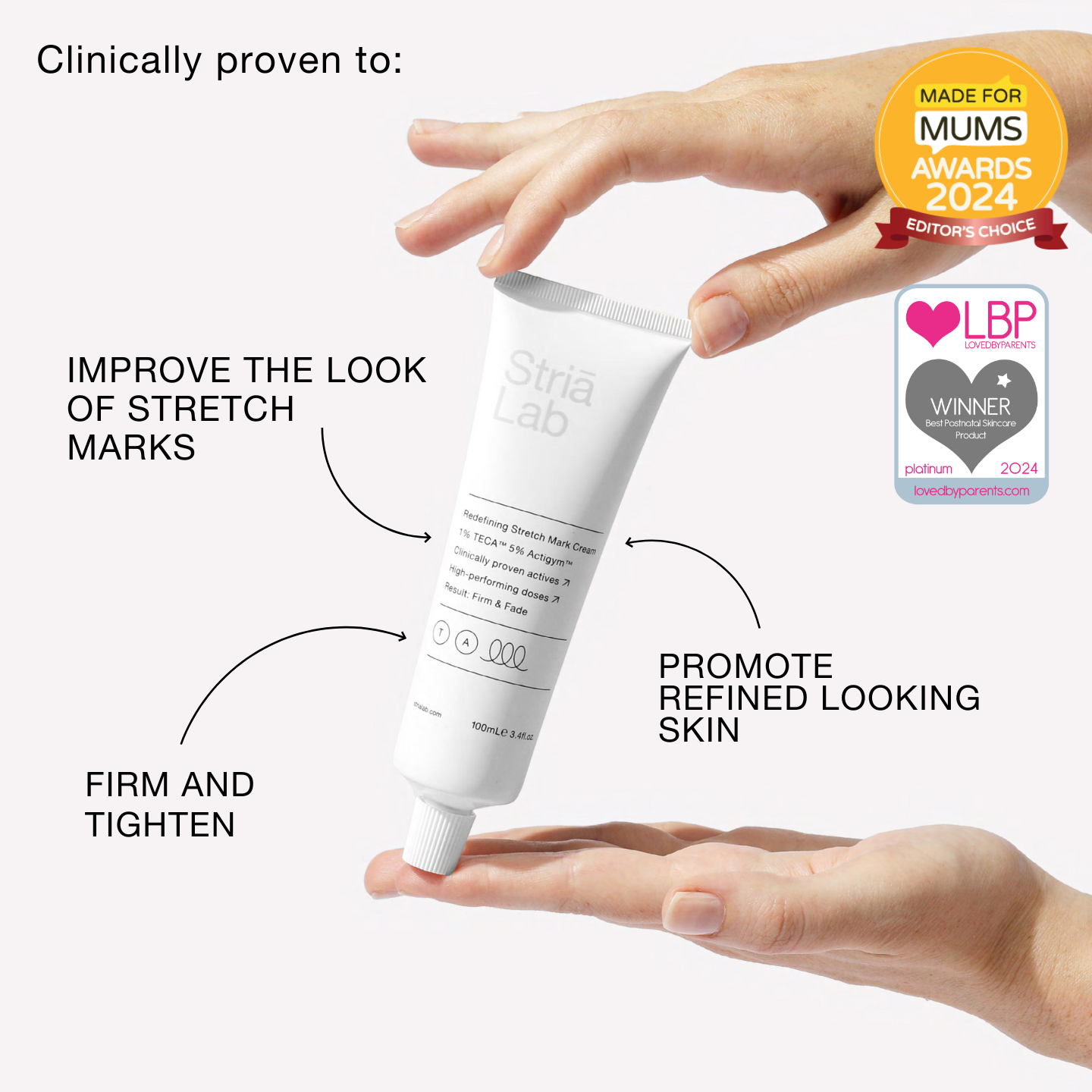
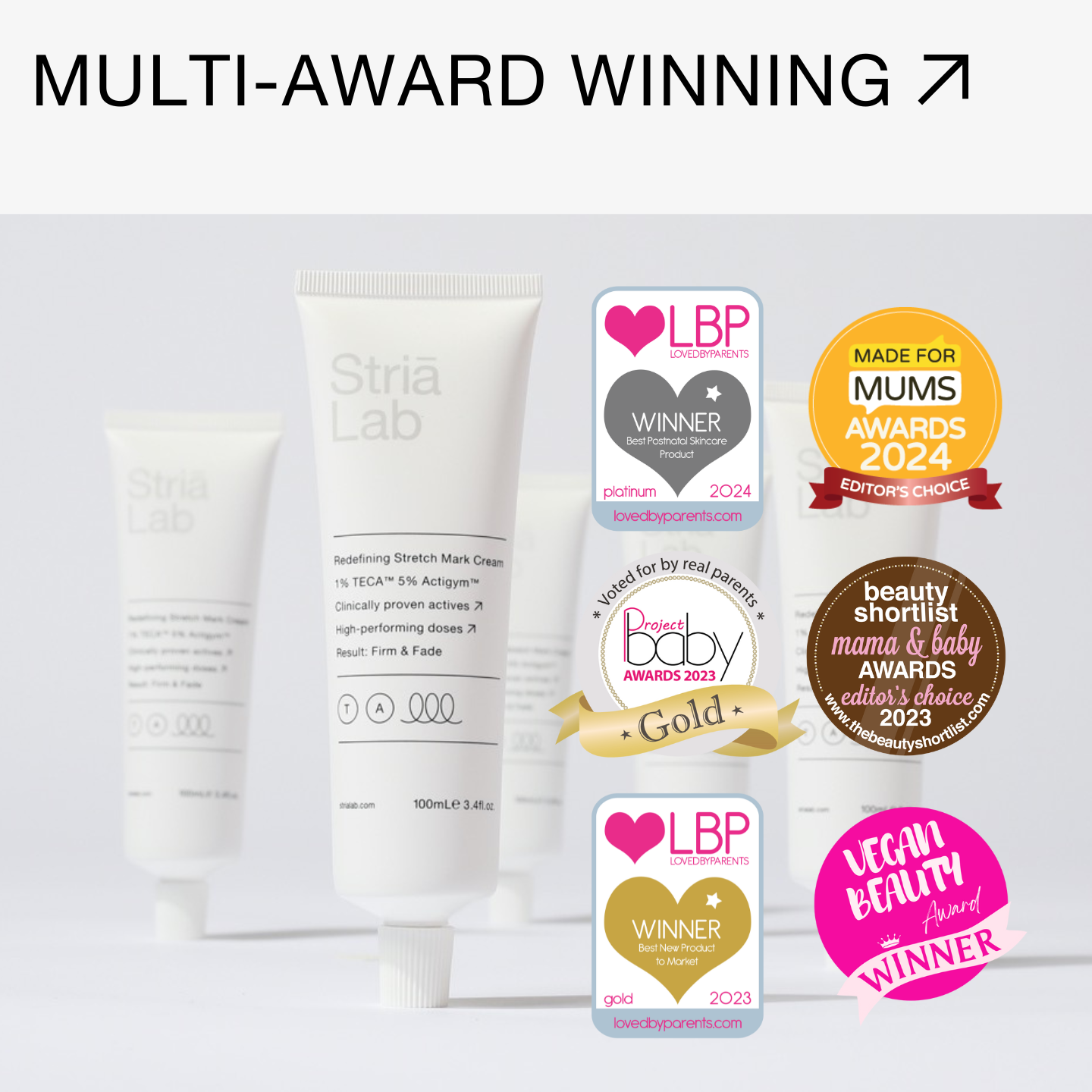
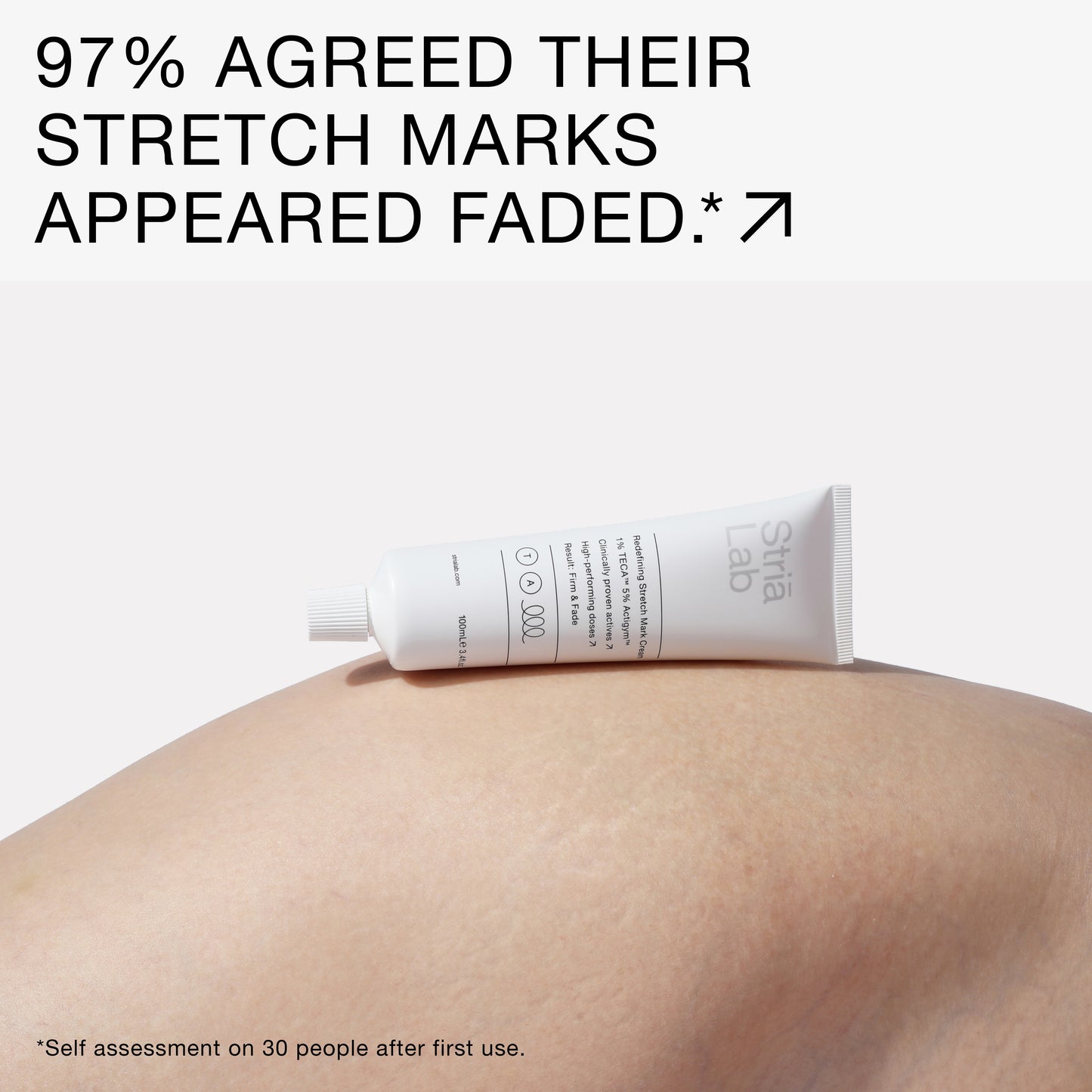
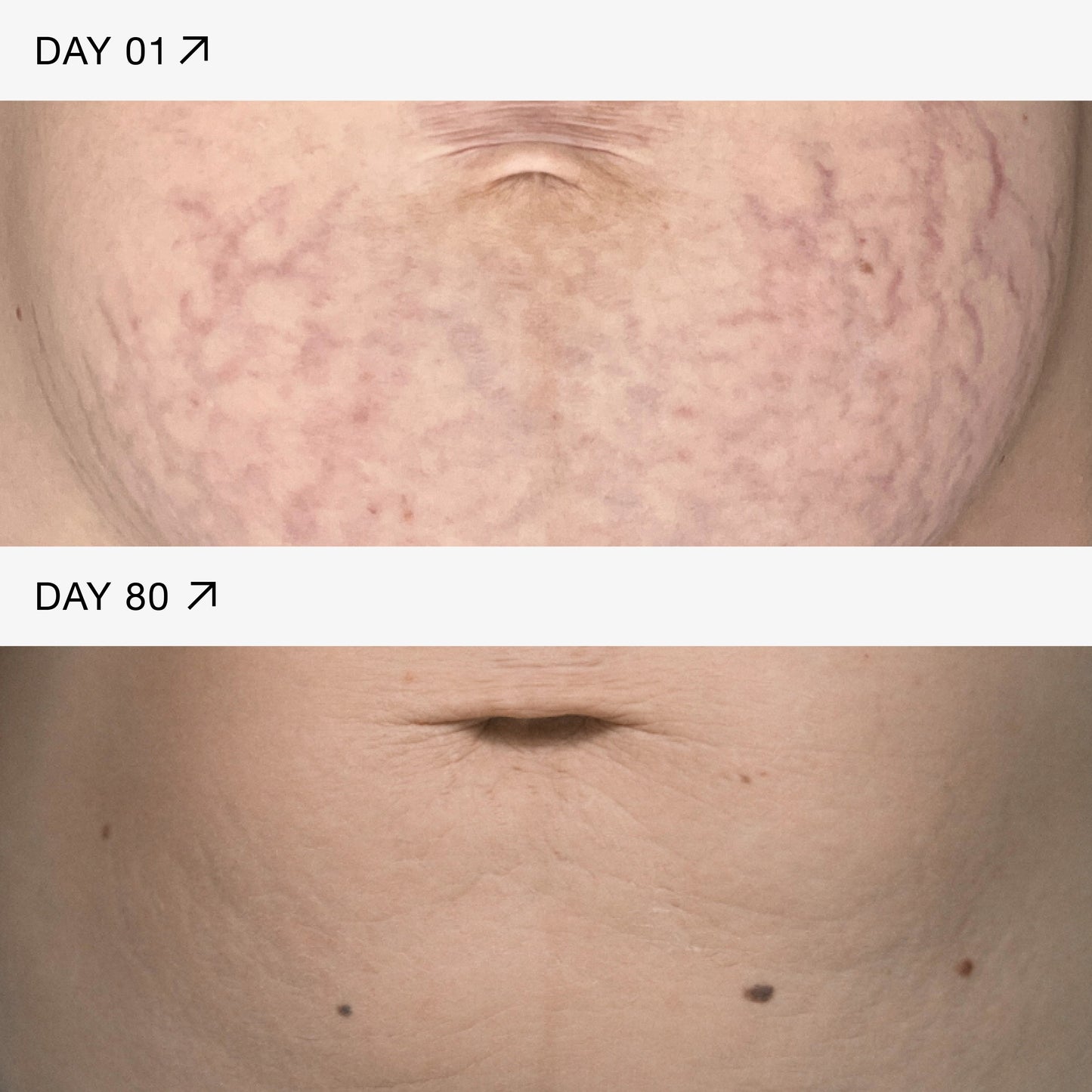
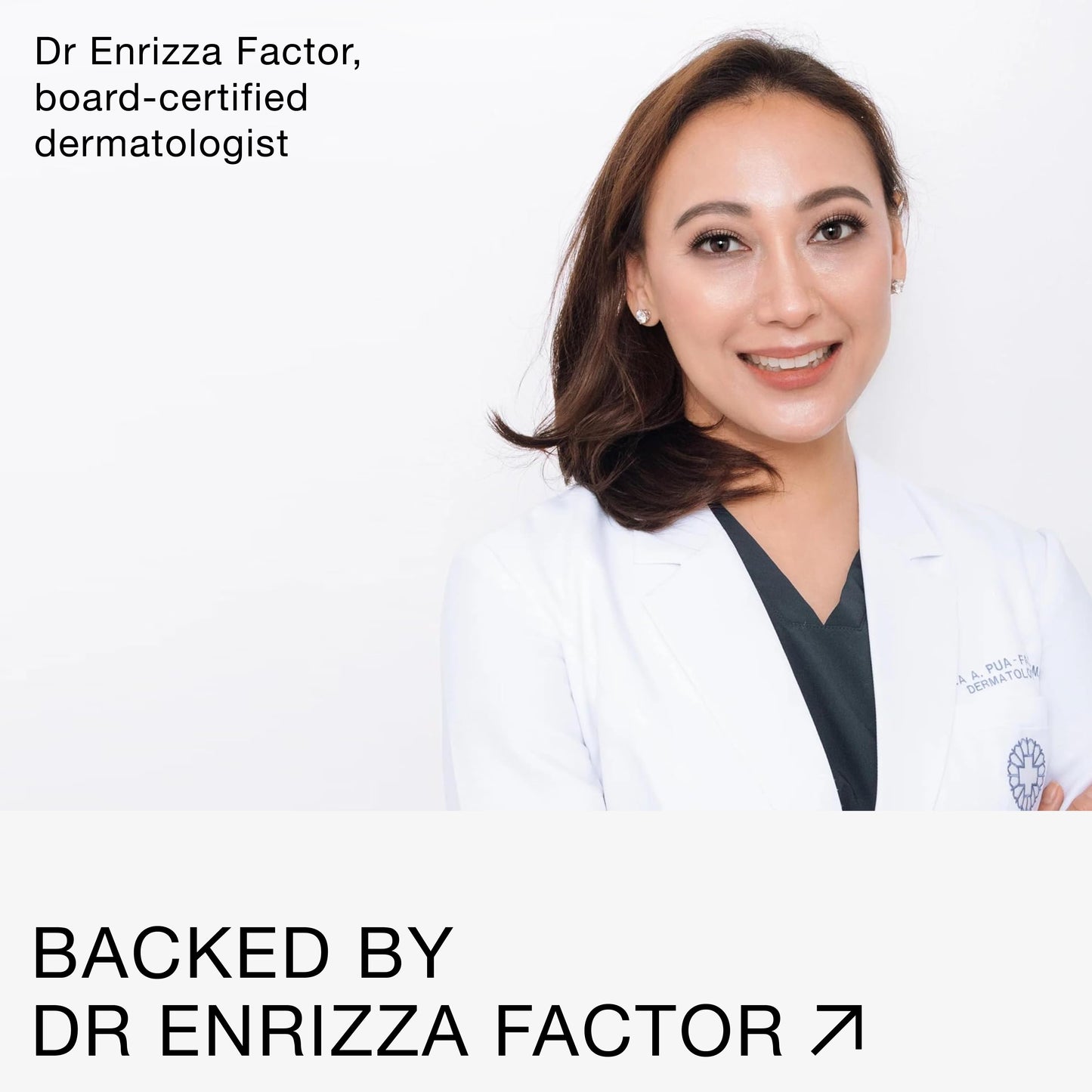
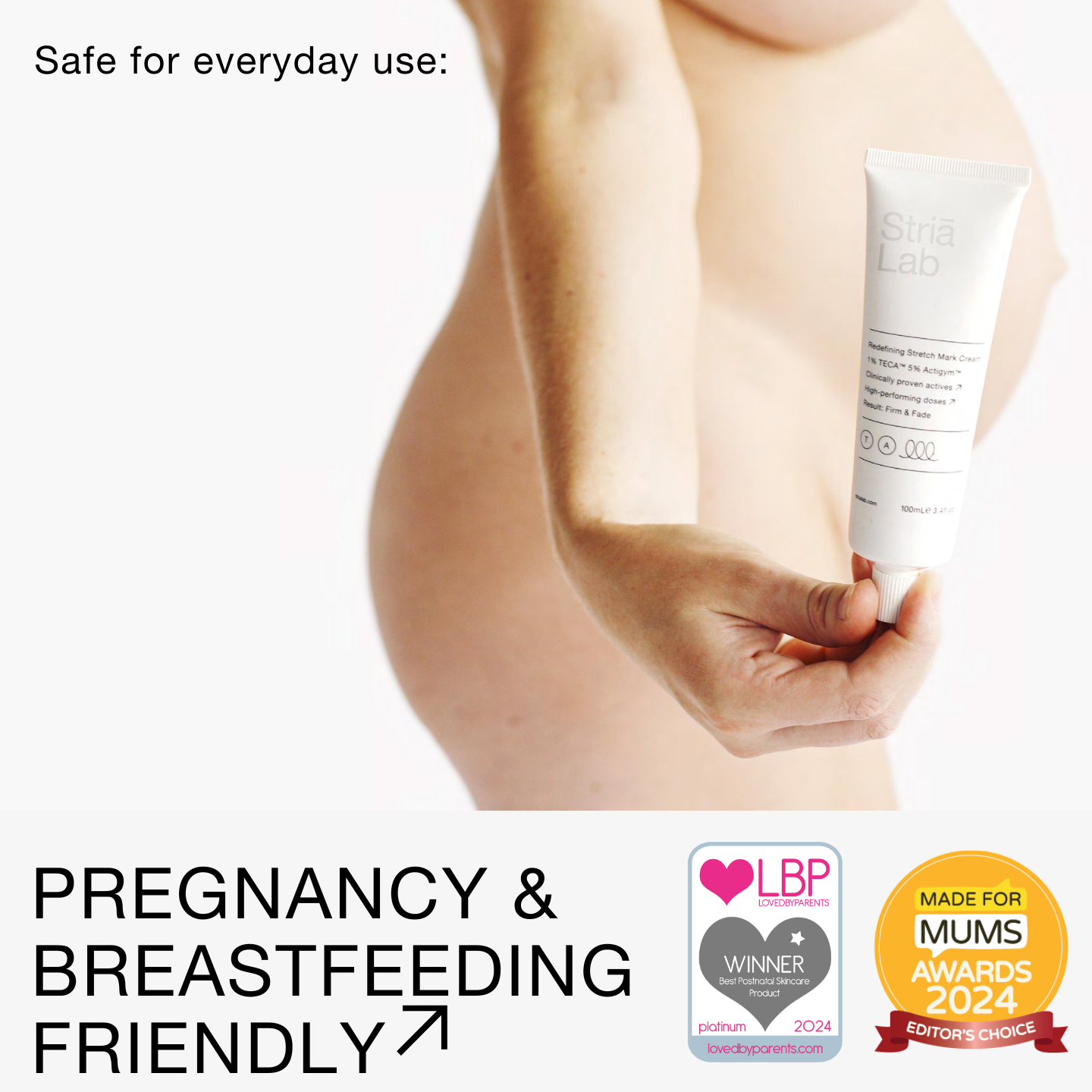
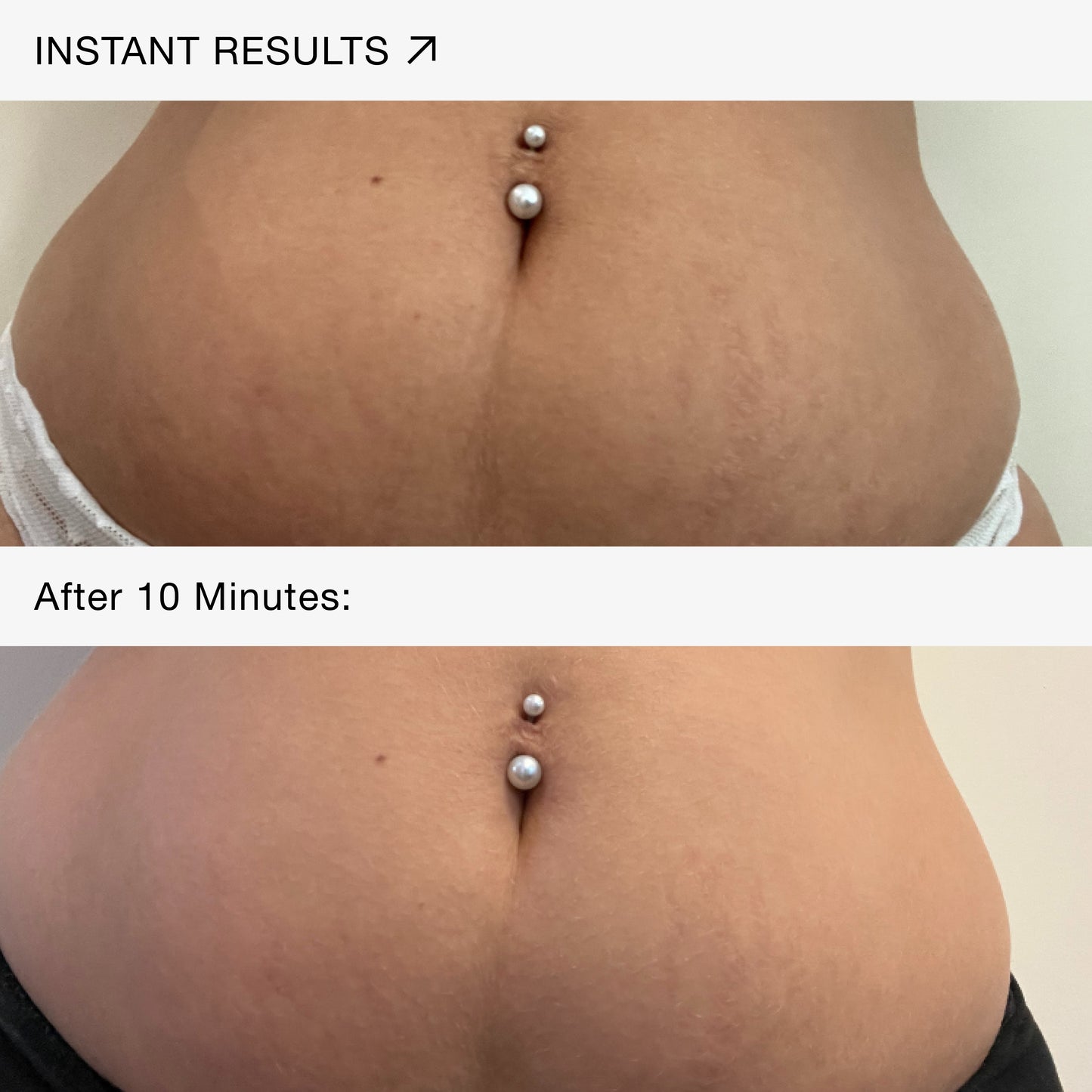
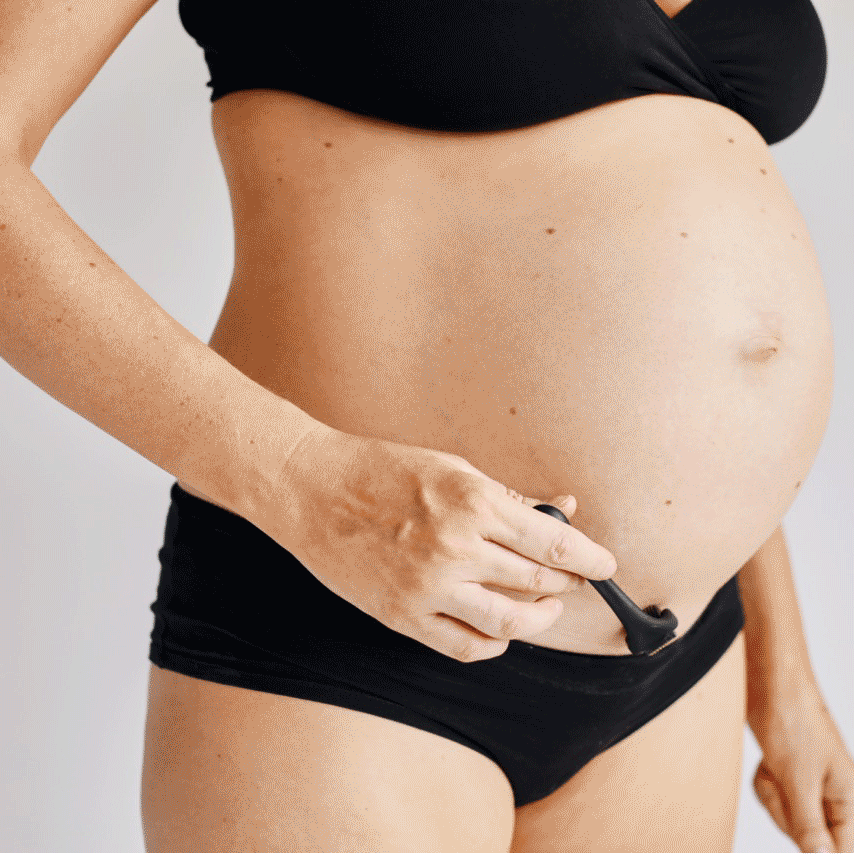
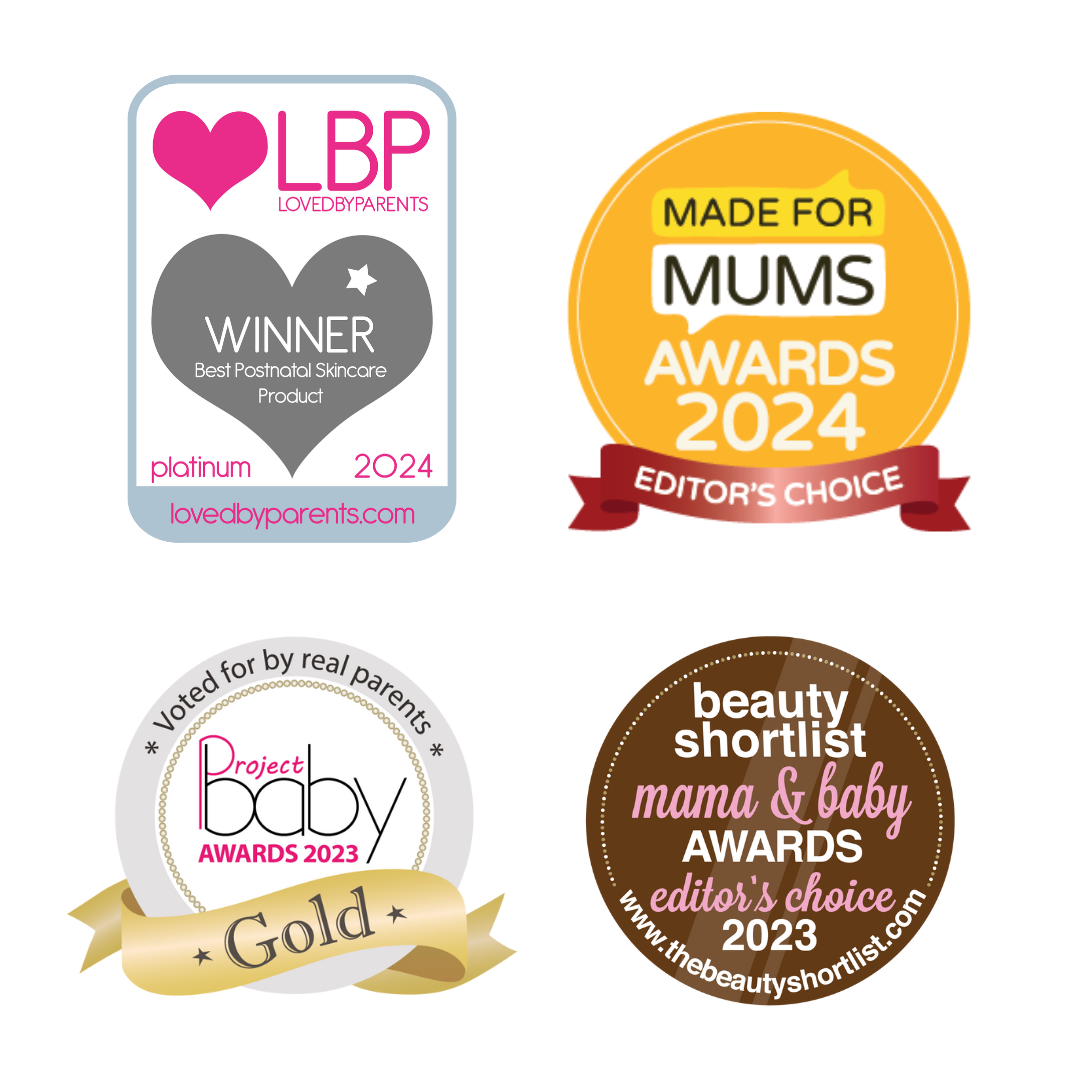
MULTI-AWARD WINNING RESULTS
Experience the power of our award-winning Stretch Mark Treatment Kit. Tried, tested and endorsed by industry experts and voted for by hundreds of happy customers.
-
“The silky cream has a ‘silk stocking’ effect to blur out imperfections instantly.”

RESULTS
-
“A powerful product for those who want to invest in treating their little lines.”

PRESS
BACKED BY BOARD-CERTIFIED DERMATOLOGISTS

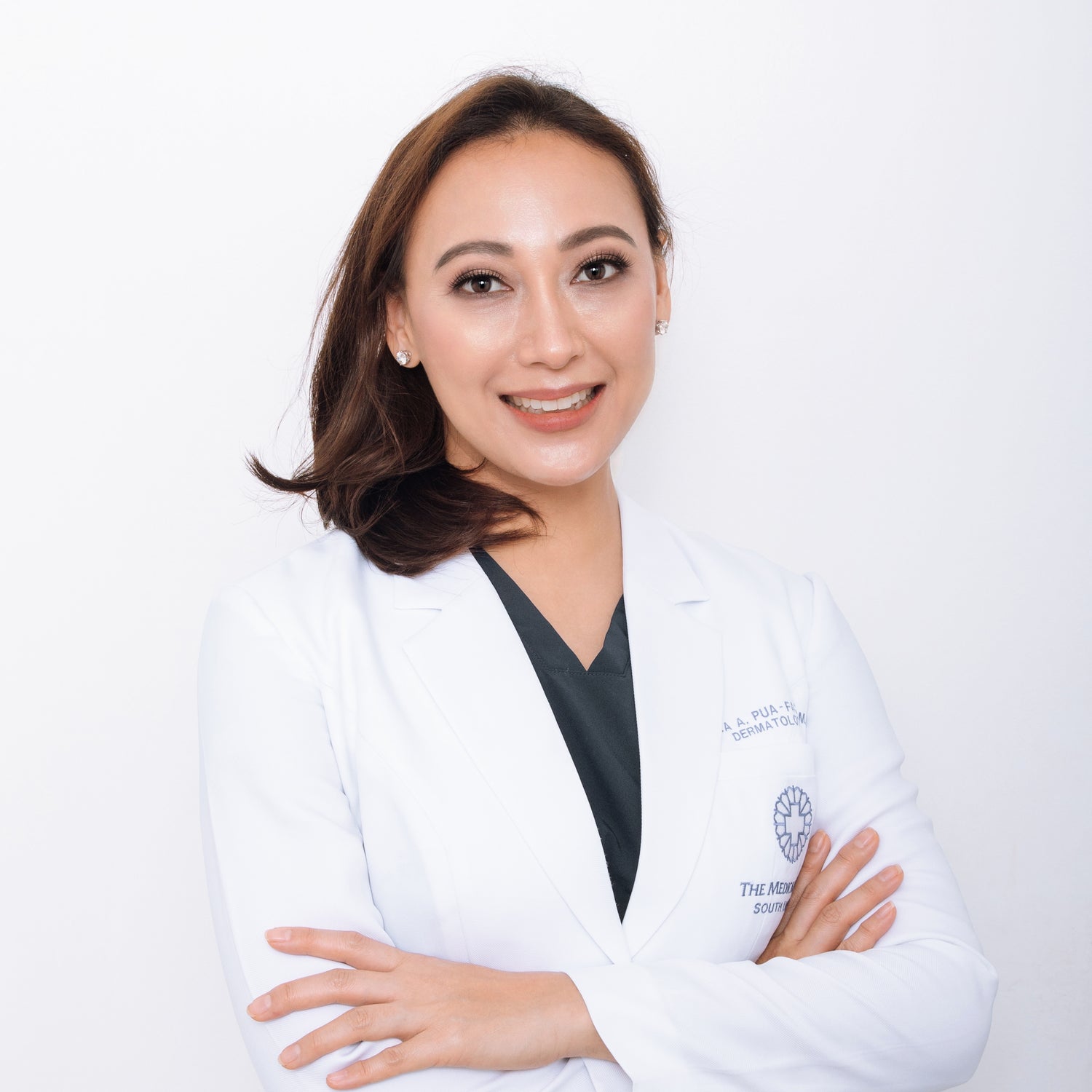
DR ENRIZZA FACTOR
"This is the answer you've been searching for. I've been treating stretch marks for over a decade now, and I can tell you no other product gives these results."
-
Cruetly
![]()
free -
Women
![]()
owned -
Science
![]()
backed -
Results
![]()
oriented -
High
![]()
performing -
Vegan
![]()
-
“I have been using it for a couple of months now and the red, angry stretch marks on my stomach are already paler in colour and less pronounced in depth."

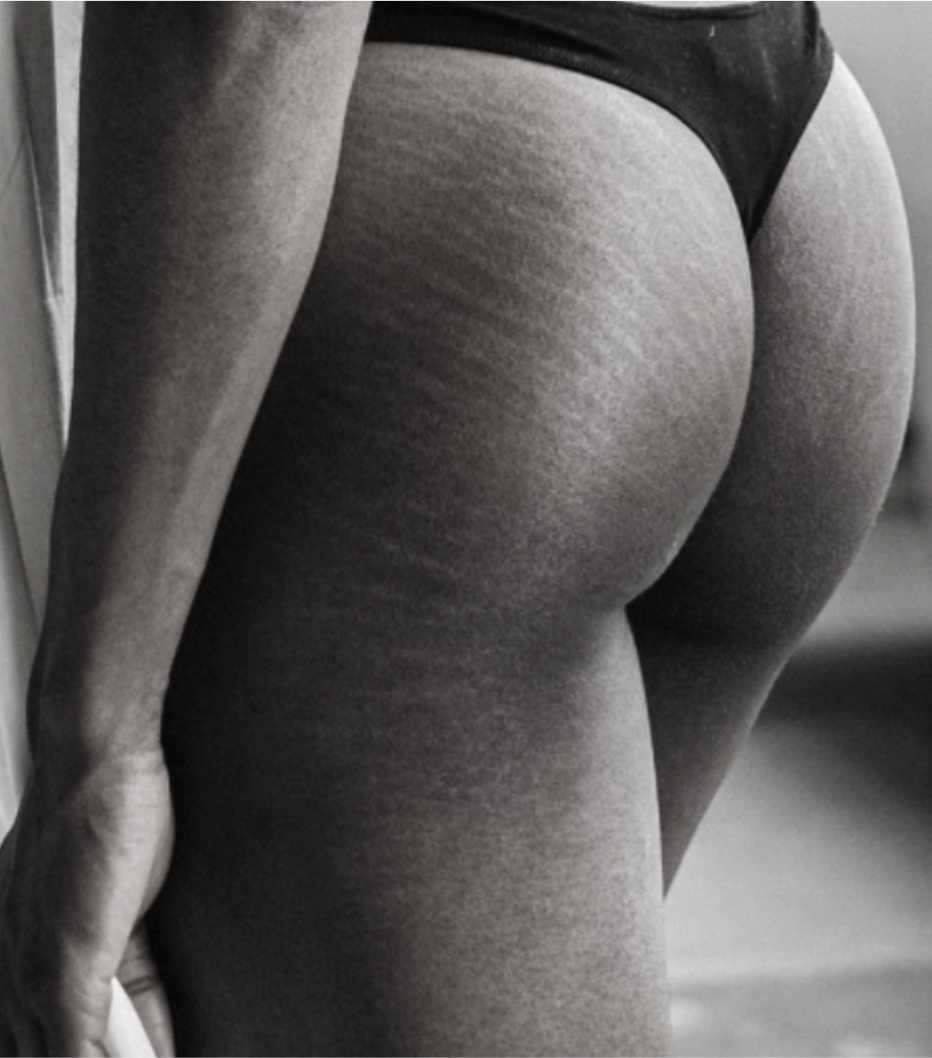
HOW TO GET RID OF STRETCH MARKS
Also featured
What is TECA™?
TECA™ (Titrated Extract of Centella Asiatica) is one of two ingredients in the world clinically proven in peer-reviewed medical journals to minimise the appearance of stretch marks and the only one that is also proven to prevent the appearance of stretch marks. The other ingredient that holds promise in minimising the appearance of stretch marks is Tretinoin; however, this isn’t classified as safe for women who are pregnant or breastfeeding and has only been proved at levels that would typically require a prescription.
TECA™ accelerates the skin repair process through stimulating fibroblast migration (which deposit collagen) and boosting the vital proteins within the dermis (the inner layer of the skin).
Why have we selected it?
TECA™ remodels and re-densifies the skin and its curative effect on the size and colour of stretch marks, make it a critical component of our stretch mark treatments.
In a study of 40 postpartum women with stretch marks, half were given a 1% TECA™ formulation, and half a placebo cream to use twice daily over 3 months. The TECA™ formulation reduced the length of stretch marks by 26%, compared to 3%, and the width by 40%, compared to 6%. It was also twice as effective at reducing the intensity of colour of the stretch marks compared to the placebo.
Another study of 80 pregnant women proved its effectiveness at preventing stretch marks and reducing their severity compared to the placebo. What’s more, it was shown to provide protection from stretch marks in women who had a history of stretch marks during puberty.
The issue with generic Centella Asiatica (compared to TECA™):
TECA™ is the highly purified composition of the three triterpenoids found within Centella Asiatica that are known to have the most benefit on the skin – asiaticoside, madecassic acid and asiatic acid. Generic Centella Asiatica extracts include the whole chemical composition of the plant and can be sourced from a range of locations with varying botanical compositions. The Centella Asiatica used in our TECA™ is sourced from Madagascar, where it grows wild and has a more stable composition of these actives at high concentrations.
TECA™ summary
| Recommended dose | 0.1-1% |
| Dose used in Stria Lab | 1% |
| Source | Titrated Extract of Centlla Asiatica |
| Region | Madagascar |
| Naturality | 100% natural origin |
| Data | Numerous in vitro and in vivo studies prove its efficacy. During the study on its curative effect on the stretch marks of postpartum women, participants used it twice daily for 3 months at a 1% dose. |
References
C. Laugel et al. (1999). Evaluation of the clinical and echographic efficacy of a cream with Centella asiatica in the treatment of stretch marks. Les Nouvelles dermatologiques, 18; 412-416.
García Hernández J.Á., Madera González D., Padilla Castillo M., Figueras F.T. (2013). Use of a specific anti-stretch mark cream for preventing or reducing the severity of striae gravidarum. Randomized, double-blind, controlled trial. Int J Cosmet Sci.;35:233–237.
Mallol, J., Belda, M., Costa, D., Noval, A. & Sola, M. (1991). Prophylaxis of Striae gravidarum with a topical formulation. A double-blind trial, Int J Cosmet Sci., 13(1), 51-57. https://www.ncbi.nlm.nih.gov/pubmed/19291041
Ud-Din, S., McGeorge, and D., Bayat, A. (2016). Topical management of striae distensae (stretch marks): prevention and therapy of striae rubrae and albae. Journal of the European Academy of Dermatology and Venereology. 30(2): 211–222.
https://www.ncbi.nlm.nih.gov/pmc/articles/PMC5057295/
WESOURCE by SEPPIC, (2019). TECA™ A Pharma* reference for skin repair available for Cosmetics application.
What is Actigym™?
Actigym™ is a multi-award-winning Bermudian marine plankton extract, proven to mimic the effect of endurance exercise training by increasing adiponectin release and mitochondrial activity (key to the metabolic effects on skeletal muscle). It improves the appearance of body contour definition that can be further complemented with exercise.
Why have we selected it?
Stretch marks are a result of the skin losing its elasticity due to stretching, so we wanted to help improve body definition and redefine areas sensitive to sagging as part of the treatment. This is especially important when stretch marks appear during pregnancy as the skin faces challenges restructuring itself correctly and lacks firmness.
In an vivo study on a group of 60 35-50-year-old women, Actigym™ visibly reduced abdomen contour by up to 2.9cm, and up to 3.1cm when combined with exercise. Thigh and arm contour were also reduced up to 2.1 cm and 1.3 cm respectively.

| Recommended dose | 5% |
| Dose used in Stria Lab | 5% |
| Science |
|
| Source | Marine Plankton Extract |
| Region | Bermuda |
| Naturality | 100% natural origin |
| Data | Backed by in vitro and in vivo studies. Used at 5% in cream and applied twice daily for 56 days |
ACTIGYM™ is owned by The Lubrizol Corporation.
References
Arunkumar, A. and Sushil, J. (2017). Adiponectin, a Therapeutic Target for Obesity, Diabetes, and Endothelial Dysfunction. International Journal of Molecular Sciences. 10.3390/ijms18061321
Lipotec. (2019). ACTIGYM™ Marine Ingredient Technical Report.
Newman, T. (2018). What are mitochondria? MedicalNewsToday.
https://www.medicalnewstoday.com/articles/320875
Porter, C. Reidy, P. Bhattarai, N. Sidossis, L. and Rasmussen, B. (2015). Resistance Exercise Training Alters Mitochondrial Function in Human Skeletal Muscle. Medicine & Science in Sports & Exercise. https://www.ncbi.nlm.nih.gov/pmc/articles/PMC4478283/
Yamaughil, T. and Kadowakil, T. (2013). Adiponectin Receptor as a Key Player in Healthy Longevity and Obesity-Related Diseases. Cell Metabolism. https://doi.org/10.1016/j.cmet.2013.01.001
What is Microneedling?
Microneedling involves the use of a device with hundreds of fine, sterilised needles which prick the skin and create microscopic wounds to induce collagen and elastin production and help the skin repair.
Why do we recommend it?
Several studies have proved the effectiveness of microneedling in the treatment of stretch marks, especially over other modalities.
Park et al. conducted a study on 16 Korean women with stretch marks. Patients used a 1.5mm microneedling tool/derma roller at 4-week intervals. Three months after the last treatment, all patients showed improved skin texture, tightness, and colour, with an “excellent” improvement noted for seven of the patients.
Additionally, Khater et al. conducted a study on 20 patients with stretch marks. 10 of them were treated with a 1.5mm microneedling tool/derma roller and the other 10 patients were treated with carbon dioxide fractional laser. 90% of patients in the microneedle-treated group demonstrated overall clinical improvement, which was greater than 50% of patients in the laser-treated group, marking a statistically significant difference between the two modalities.
Similarly, Nassar et al. conducted a study on 40 female patients with stretch marks. Half of them were treated with a 1.5mm microneedling tool/derma roller at 4-week intervals and the other half were treated by microdermabrasion with sonophoresis. 90% of patients in the microneedle-treated group demonstrated overall clinical improvement, compared to 50% of patients in the microdermabrasion with sonophoresis-treated group, again marking a statistically significant difference between the two modalities.
Other studies by Ali et al.; Sanad et al. and Agamia et al. also prove the safety and effectiveness of microneedling, making it a great solution for at-home treatment.
|
Needle length used in majority of studies
|
1.5mm
|
|
Needle length used by Stria Lab
|
1.5mm
|
|
Needle material
|
Premium titanium for maximum durability
|
|
Recommended intervals for use
|
Around every four weeks
|
|
Data
|
Backed by several studies, proving its effectiveness in the treatment of stretch marks, particularly over other modalities
|
References
Agamia NF, Embaby MH, El-Sheikh DS. (2016). Comparative study between micro needling alone and microneedling combined with platelet-rich plasma in the treatment of striae distensae using clinical and histopathological assessment. J Egypt Women Dermatol Soc. 13:187–193.
Ali BMM, El-Tatawy RA, Elfar NN, Ali DAM. (2017). A comparative clinical and histopathological study of micro needling versus microdermabrasion (aluminum oxide crystals) in the treatment of striae distensae. J Egypt Women Dermatol Soc. 14:92–99.
Hagag, M., Samaka, R., Mahmoud, H. (2019). Role of microneedling in treatment of patients with striae distensae. Menoufia Medical Journal. 32: 756-762. https://www.mmj.eg.net/article.asp?issn=1110-2098;year=2019;volume=32;issue=3;spage=756;epage=762;aulast=Hagag#ref10
Khater MH, Khattab FM, Abdelhaleem MR. (2016). Treatment of striae distensae with needling therapy versus CO2 fractional laser. J Cosmet Laser Ther. 18:75–79.
Nassar A, Ghomey S, El Gohary Y, El-Desoky F. (2016). Treatment of striae distensae with needling therapy versus microdermabrasion with sonophoresis. J Cosmet Laser Ther. 18:330–334.
Park KY, Kim HK, Kim SE, Kim BJ, Kim MN. (2012). Treatment of striae distensae using needling therapy: a pilot study. Dermatol Surg. 38:1823–1828.
There are two forms of stretch marks: striae rubrae and striae albae. Striae rubrae are considered the early form, which are often red, sometimes slightly raised and don’t recur. Over time these stretch marks lighten and develop a pale, wrinkled appearance known as striae albae, which also don’t recur but are permanent.
Striae rubrae respond better to treatment, so it is recommended to treat stretch marks when they first appear.
While stretch marks are permanent, there are clinically proven ways to reduce their appearance, both via topicals and devices. Discover the most effective treatments here.
Stretch marks (striae) are indented streaks on the body that typically appear on the stomach, breasts, hips or bottom. They occur when the dermis (the thickest layer of skin) has to stretch quickly due to rapid weight gain or a growth spurt.
They're very common in pregnant women, especially during the last trimester, but they can occur anytime the skin becomes overstretched, such as rapid growth spurts during puberty or when bodybuilding.


